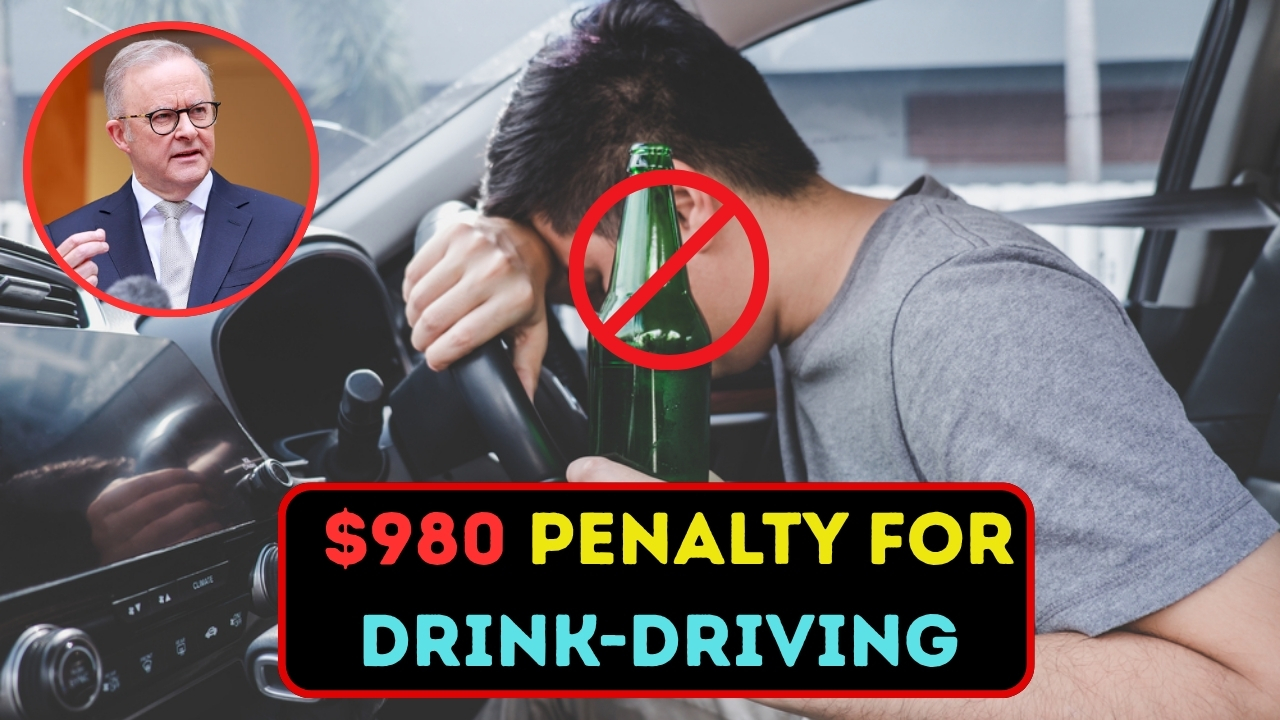Australia is tightening the reins on road safety in 2025, and one of the biggest shake-ups is aimed directly at drink-driving. If you thought the old penalties were already tough, brace yourself—because the new laws will sting even more. Starting next year, drivers caught over the legal blood alcohol limit will not only face license suspensions but also a hefty $980 fine and a fresh set of penalties that are designed to act as a much stronger deterrent.
Now, on the surface, you might think: “Well, that’s fair enough. Drink-driving is dangerous.” And you’re right. But when you dig deeper, you’ll see this new policy is more than just about punishing people—it’s about trying to change behavior on the roads. And honestly, whether you drive every day or only on weekends, this is something you need to pay attention to.
Why the Crackdown Now?
To be fair, drink-driving has been a longstanding issue in Australia. Despite decades of awareness campaigns, random breath tests, and ongoing enforcement, authorities still report thousands of drink-driving incidents every year. Sadly, many of these cases end in crashes, injuries, and even fatalities.
Officials argue that previous penalties, while serious, weren’t strong enough to send a message that sticks. A slap on the wrist with a fine and a temporary license suspension might have discouraged some, but others continued to take the risk. So, the 2025 changes are being introduced as a firm line in the sand: if you drink and drive, you’re not only paying nearly a thousand dollars but also risking longer suspensions, harsher repeat-offender punishments, and even vehicle impoundment in some states.
What Exactly Are the New Penalties?
Here’s where things get interesting—and honestly, a little intimidating if you’re someone who thinks “just one more drink” is harmless.
- $980 fine for first-time low-range offenders (those with a blood alcohol concentration just over the legal limit).
- Immediate license suspension, even for lower-range cases.
- Vehicle impoundment in repeat or high-range cases.
- Mandatory alcohol interlock devices for offenders, meaning your car won’t start unless you blow zero BAC.
- Harsher penalties for repeat offenders, including longer disqualification periods and potential jail time.
Put simply, the government isn’t just raising the price of a mistake—they’re making the consequences stick with you long after the night is over.
The Bigger Picture
Let’s be real here. Most Australians know drink-driving is wrong, but sometimes social settings, celebrations, or “just one too many” can push people into risky choices. The new penalties aim to break that casual mindset.
Authorities believe that the shock factor of a $980 fine will make people think twice before turning the ignition after a few drinks. And with random breath testing still a major part of policing, it’s not exactly easy to roll the dice anymore.
On the flip side, some critics argue that the government is leaning too heavily on financial punishment, which might hit lower-income drivers harder. Others say more investment in late-night transport options, rideshare incentives, or community education would go further in preventing drink-driving.
But, in all fairness, the government sees these new penalties as a two-pronged strategy: deter risky behavior now and save lives in the long run.
How Does This Compare to Other Countries?
Interestingly, Australia’s new penalties put it in line with some of the strictest drink-driving laws in the world. Countries like Sweden and Japan already enforce extremely harsh penalties for even low-level alcohol readings, and their road safety stats show it works.
So, in many ways, Australia is simply catching up with global best practices. The message is loud and clear: roads aren’t a place for second chances when alcohol is involved.
What This Means for Everyday Drivers
If you’re someone who enjoys a drink now and then, you don’t necessarily have to give it up altogether. But it does mean rethinking your choices. Planning ahead is key—whether it’s using public transport, booking a rideshare, or even arranging a designated driver.
Because let’s be honest, a taxi ride home for $40 is infinitely better than losing your license, paying nearly a grand, and dealing with the hassle of interlock devices. Not to mention, it keeps you and everyone else on the road safe.
Australia’s 2025 crackdown on drink-driving isn’t just another law change—it’s a cultural push. It’s about making people take responsibility not just for themselves but for every other road user too.
Yes, the $980 fine hurts. Yes, the penalties are tough. But at the end of the day, the aim is simple: fewer accidents, fewer tragedies, and safer roads for everyone. And really, that’s something we can all raise a glass (of water) to.
Quick Reference Table
| Offense Level | Fine (2025) | Other Penalties |
|---|---|---|
| Low-range BAC (0.05–0.08) | $980 | Immediate license suspension |
| Mid-range BAC (0.08–0.15) | Higher fines | Longer suspension, possible vehicle impound |
| High-range BAC (0.15+) | Higher fines | License disqualification, interlock, jail |
| Repeat Offender | Varies | Severe penalties, extended suspensions |
FAQs
1. What is the new fine for drink-driving in 2025?
The base fine for low-range offenders is $980, with higher penalties for mid- and high-range cases.
2. Will my license be suspended immediately?
Yes, even for low-range readings, your license can be suspended on the spot.
3. Can my car really be taken away?
Yes, repeat offenders and high-range drivers may face vehicle impoundment.
4. What’s an alcohol interlock device?
It’s a system installed in your car that requires a zero BAC reading before you can start the vehicle.
5. Why are the penalties so high now?
The government wants to deter risky behavior, reduce accidents, and improve road safety overall.




